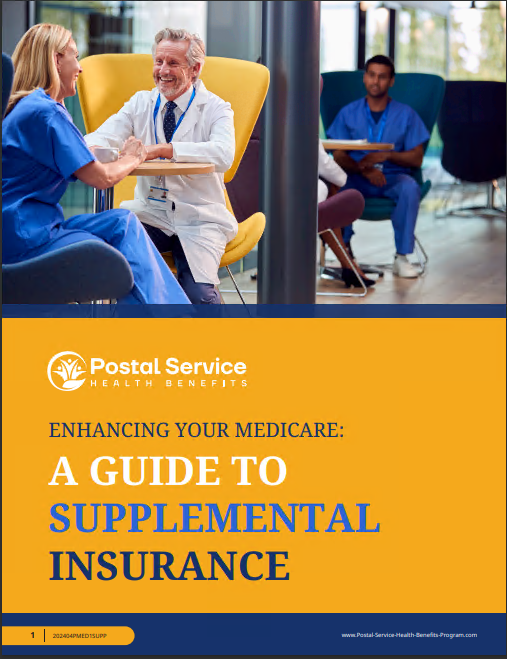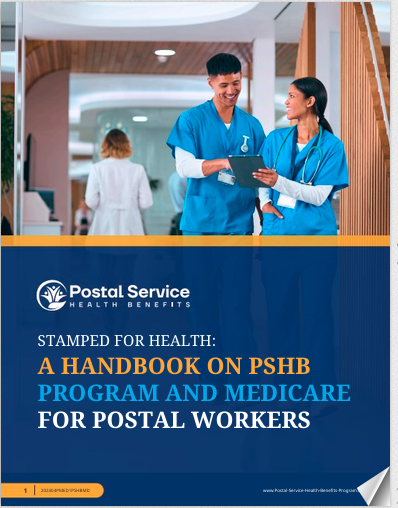Key Takeaways
-
You don’t need to waste hours reading everything available about the Postal Service Health Benefits (PSHB) program. A handful of official resources and focused tools are more than enough to help you make confident health plan decisions in 2025.
-
Knowing where to look—and how to use each resource—can keep you from missing critical enrollment deadlines, Medicare pairing steps, or plan comparison details that impact your costs.
Start with the Official Source: OPM’s PSHB Page
If you use only one resource for your PSHB decisions, let it be the U.S. Office of Personnel Management (OPM) PSHB page. This is the main hub for:
-
Current plan brochures for every available PSHB option
-
Premium breakdowns, including government contributions
-
Side-by-side comparison tools
-
Details about Medicare coordination and eligibility
-
FAQs on transition rules and timelines
The OPM’s PSHB site is updated annually, typically by early October, just before the Open Season period begins in November. For 2025, you can already access detailed brochures and premium tables.
To make this resource work for you:
-
Use the plan comparison tool to filter options by coverage type, region, and Medicare status.
-
Download the 2025 plan brochures directly—these include details on deductibles, copays, out-of-pocket maximums, and more.
-
Review the Medicare and PSHB integration section if you’re 65 or older or approaching Medicare eligibility.
Rely on LiteBlue and KeepingPosted.org for Enrollment Help
Where you go for help depends on whether you’re a current employee or a retiree.
-
USPS Employees: You’ll use LiteBlue, the employee portal, to manage PSHB enrollment. During Open Season (November to December), LiteBlue displays your available plans, pricing options, and enrollment forms.
-
USPS Annuitants: If you’re retired, you’ll use KeepingPosted.org. This site hosts enrollment materials, contact information, and links to the PSHB Navigator Help Line.
Both platforms will guide you step by step through:
-
Verifying eligibility
-
Choosing a plan
-
Making changes during Open Season or after a qualifying life event (QLE)
Bookmark your applicable portal so you don’t lose track of your enrollment deadlines.
The PSHB Navigator Help Line Is Worth Calling
Whether you’re confused about enrollment forms or trying to figure out how Medicare fits in, the PSHB Navigator Help Line (1-833-712-7742) is a reliable resource in 2025.
They can:
-
Explain how to pair your PSHB plan with Medicare Part A and B
-
Help you understand your drug coverage if you’re on Medicare Part D
-
Assist with navigating LiteBlue or KeepingPosted.org
Agents on this help line are trained on PSHB rules and enrollment timelines. If you’re unsure whether you meet Medicare Part B requirements under PSHB, this is the number to call.
Watch for Your Annual Notice of Change (ANOC) Letter
Each fall, your PSHB plan sends you an Annual Notice of Change (ANOC) letter. This is a key document that outlines what’s changing in your plan for the upcoming year—including coverage, copayments, and out-of-pocket limits.
For 2025, your ANOC letter should have arrived by October. If you didn’t receive one:
-
Contact your current PSHB plan using the information from your plan brochure
-
Call the PSHB Navigator Help Line to request a copy
Don’t ignore this letter. It lets you know whether your current plan is still the right fit—before Open Season ends.
Use the Medicare Plan Finder—If You’re Eligible
If you’re 65 or older, you should already be enrolled in Medicare Part A. Many PSHB enrollees are also required or strongly encouraged to enroll in Medicare Part B to keep their PSHB plan active.
While PSHB plans include integrated Medicare drug coverage through Part D Employer Group Waiver Plans (EGWPs), you may still want to:
-
Use Medicare’s Plan Finder tool to double-check your drug coverage
-
Understand your out-of-pocket costs if you opt out of Part B or Part D
This tool can help you:
-
Compare your PSHB drug benefits to other available Medicare drug plans
-
Ensure your current prescriptions are covered
-
Review costs by pharmacy
You don’t need to switch to a separate Medicare drug plan, but the comparison can help you understand where your PSHB plan fits into the bigger Medicare picture.
The Federal Benefits FastFacts Series—Short and Focused
For quick reads with real value, the OPM FastFacts are excellent. These are brief PDF summaries that focus on a single topic like:
-
Medicare and PSHB
-
Survivor benefits
-
Open Season enrollment tips
-
Premium changes
You can find these on the OPM website under the Healthcare section. They’re especially helpful if you:
-
Want a quick answer without going through a full brochure
-
Need a summary of what’s new this year
-
Are assisting a spouse or family member with their enrollment
Federal Retirement Thrift Investment Board (FRTIB) Resources—If You Also Manage TSP
While not part of PSHB directly, many USPS employees and retirees manage Thrift Savings Plan (TSP) funds alongside their health benefits.
If you’re trying to coordinate:
-
Retirement income with PSHB premium deductions
-
TSP withdrawals to cover out-of-pocket costs
Visit the TSP.gov site to:
-
Review withdrawal strategies
-
Set up monthly payments timed with your PSHB premiums
-
Understand how your age affects withdrawal rules and taxes
This is especially important if you’re turning 59½, 62, or 72 in 2025—ages tied to required minimum distributions (RMDs) and early withdrawal penalties.
USPS Retiree Newsletters and Statements
Throughout the year, the Postal Service sends retirees informational materials, including:
-
Newsletters with policy updates and enrollment reminders
-
Annual retirement annuity statements
-
Notifications about changes to PSHB coordination with Medicare
Make sure your mailing address is current on KeepingPosted.org so you don’t miss:
-
PSHB-specific reminders
-
Medicare coordination deadlines
-
Premium payment instructions
These are not promotional—they’re official government updates that can directly affect your benefits.
Avoid Relying on Forums and Social Media Posts
It’s tempting to scroll through Reddit threads or Facebook groups to see what other Postal retirees are saying. But these sources can easily confuse more than they help.
Why you should be cautious:
-
Many posts reflect outdated FEHB rules, not PSHB
-
Advice often lacks nuance (especially for Medicare integration)
-
Misinformation spreads quickly and is rarely corrected
Stick to resources from OPM, USPS, or licensed professionals. And when in doubt, call the PSHB Navigator Help Line or talk to a licensed agent listed on this website.
PSHB Enrollment Periods and Medicare Coordination Deadlines
Knowing your deadlines can save you from serious coverage gaps:
-
Open Season runs from early November through early December each year. This is the only time you can switch PSHB plans unless you qualify for a QLE (Qualifying Life Event).
-
If you’re newly turning 65, your Initial Enrollment Period (IEP) for Medicare spans 3 months before, the month of, and 3 months after your 65th birthday.
-
Certain Postal retirees must enroll in Medicare Part B to keep their PSHB coverage active, unless they’re exempt.
-
The Part B Special Enrollment Period (SEP) for PSHB-eligible individuals ended September 30, 2024. If you missed that window, your options are now limited.
These dates determine how much you’ll pay and whether you’ll be fully covered.
What to Read, What to Skip
You don’t need to read everything. Here’s a streamlined list of what you should absolutely review:
Must-Use Resources:
-
OPM PSHB comparison tools and brochures (October–December)
-
PSHB Navigator Help Line (year-round)
-
Your ANOC letter (October)
-
LiteBlue or KeepingPosted.org (November–December)
-
Medicare Plan Finder (if 65+)
Optional—but Helpful:
-
Federal Benefits FastFacts (any time)
-
TSP.gov withdrawal guidance (if managing TSP)
-
USPS retiree mailers (watch for updates)
Skip or Use with Caution:
-
Social media advice
-
Non-government blogs or unofficial videos
-
Forums unless verified by official sources
The Best Time to Act Is Before Open Season Ends
When you understand the difference between useful and unnecessary resources, you gain more than peace of mind—you gain real financial control. You can avoid late penalties, missed deadlines, or choosing a plan that no longer fits your healthcare needs.
If you have questions about how your PSHB coverage works with Medicare, or want help choosing the most cost-effective plan for your retirement stage, get in touch with a licensed agent listed on this website for professional guidance.







